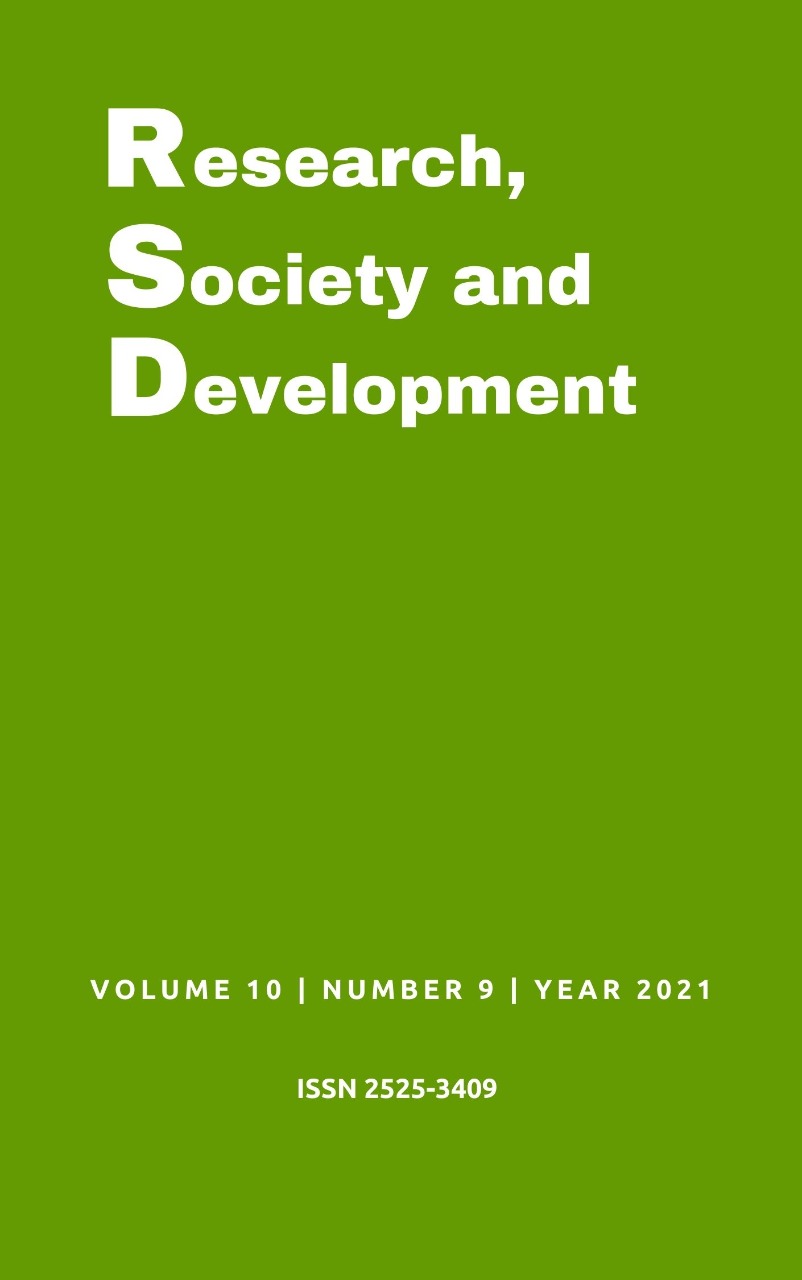An internet of things based solution to support nature tourism
DOI:
https://doi.org/10.33448/rsd-v10i9.18271Keywords:
Nature Tourism; Tourism Technology; Tourism 4.0; Internet of Things; Cloud Computing; Applications for mobile devices.Abstract
The tourism sector has shown sustainable growth in recent years, observing both the Brazilian and the world scenario. Although the global pandemic caused by COVID-19 interrupted the sector's annual growth sequence and established tourism as the sector most affected by the pandemic, studies indicate that the second half of 2021 will be related to the beginning of the sector's recovery phase and tourism of nature is pointed out as the most attractive niche in the recovery phase. On the other hand, the tourism sector has a huge potential for technological innovation and proposals aligned with Tourism 4.0 can bring even more strength in the post-pandemic. This work proposes a solution based on Internet of Things, Cloud Computing and Mobile Devices to help nature tourism. The solution allows tourists to observe via video streaming a remote point of visitation and assess the local weather conditions in real time, allowing for better planning of visitation and displacement. The study included the installation of 4 (four) monitoring stations in tourist spots in the state of Pernambuco and carried out an initial validation of the proposal with a small group of potential users of the solution. According to the obtained results, the monitoring stations provide more accurate information compared to existing services and the application was well evaluated by potential users.
References
B2K. (2018). B2K Technology Solutions: Produtos. http://www.b2ktech.com.br/#produtos.
Brasil. (2021). Governo Federal do Brasil. Ministério do Turismo. Relatório de Impacto da Pandemia de COVID-19 nos setores de turismo e cultura no Brasil. http://www.dadosefatos.turismo.gov.br/boletins/item/download/1175_000cfb701ec1f89133455ce5f0ed9caa.html.
Buhalis, D. (2019). Technology in tourism-from information communication technologies to eTourism and smart tourism towards ambient intelligence tourism: a perspective article. Tourism Review.
Caninos. (2018). Programa. https://caninosloucos.org/pt/program-pt.
Choudhari, S., Rasal, T., Suryawanshi, S., Mane, M., & Yedge, S. (2017). Survey paper on internet of things: IoT. International Journal of Engineering Science and Computing, 7(4), 10564-10567.
CPqD. (2017). A plataforma dojot e os 10 princípios da “cidade como plataforma”. https://www.cpqd.com.br/internet-das-coisas-iot-backup/a-plataforma-dojot-e-os-10-principios-da-cidade-como-plataforma.
Developer, A. (2009). Android Developer. línea]. https://developer. android. com.
Embarcados. (2019). Plataforma IoT – Como prototipar nossas ideias (Parte 1). https://www.embarcados.com.br/plataforma-iot-como-prototipar-nossas-ideias-parte-1.
Flauzino, M., Veríssimo, J., Terra, R., Cirilo, E., Durelli, V. H., & Durelli, R. S. (2018). Are you still smelling it? A comparative study between Java and Kotlin language. In Proceedings of the VII Brazilian symposium on software components, architectures, and reuse (pp. 23-32).
Garcia, A., Linaza, M. T., Gutierrez, A., & Garcia, E. (2019). Gamified mobile experiences: smart technologies for tourism destinations. Tourism Review.
Gcaba, O., & Dlodlo, N. (2016). The internet of things for South African tourism. In 2016 IST-Africa Week Conference (pp. 1-8). IEEE.
Jain, R. (1990). The art of computer systems performance analysis: techniques for experimental design, measurement, simulation, and modeling. John Wiley & Sons.
Khatri, I. (2019). Information technology in tourism & hospitality industry: A review of ten years’ publications. Journal of Tourism and Hospitality Education, 9, 74-87.
Locust. (2020). What is Locust? https://docs.locust.io/en/stable/what-is-locust.html.
Machado, L. P., & Almeida, A. (2010). Inovação e Novas Tecnologias [recurso eletrônico]. Porto: SPI Sociedade Portuguesa de Informação.
Neves, C. S. B., de Souza, W. F. L., & de Souza Carvalho, I. (2020). Tecnologia e espaços turísticos: aplicativos de turismo em áreas naturais no Brasil. Geografia: Publicações Avulsas, 2(1), 331-352.
NGINX. (2019). NGINX: o que é e por que utilizar? EVEO. https://www.eveo.com.br/blog/nginx/.
Nielsen, J. (1994). Usability engineering. Morgan Kaufmann.
Pasanen, K., Pesonen, J., Murphy, J., Heinonen, J., & Mikkonen, J. (2019). Comparing Tablet and Virtual Reality Glasses for Watching Nature Tourism Videos. In Information and Communication Technologies in Tourism 2019 (pp. 120-131). Springer, Cham.
Pereira, A. S., Shitsuka, D. M., Parreira, F. J., & Shitsuka, R. (2018). Metodologia da pesquisa científica Ed (pp. 3-9). UAB/NTE/UFSM: https://repositorio. ufsm. br/bitstream/handle/1/15824/Lic_Computacao_Metodologia-Pesquisa-Cientifica. pdf.
Santa Ana, A. G. (2019). Turismo brasileiro 4.0: do analógico ao digital. A digitalização e a mudança na venda de “pacotes” de viagens nas operadoras de turismo do Brasil (Dissertação).
Schulzrinne, H., Rao, A., & Lanphier, R. (1998). RFC2326: Real time streaming protocol (RTSP).
Silva, F. (2013). Turismo na natureza como base do desenvolvimento turístico responsável nos Açores. Tese (Doutorado em geografia). Universidade de Lisboa.
SQLite. (2021). SQLLite Documentation. https://www.sqlite.org/docs.html.
Stankov, U., & Gretzel, U. (2020). Tourism 4.0 technologies and tourist experiences: a human-centered design perspective. Information Technology & Tourism, 22(3), 477-488.
UNWTO. (2019). International Tourism Highlights 2019 Edition. World Tourism Organization - UNWTO. http://www.dadosefatos.turismo.gov.br/images/demanda/International_Tourism_Highlights_2019_Edition.pdf.
Downloads
Published
How to Cite
Issue
Section
License
Copyright (c) 2021 Danilo Ricardo Barbosa de Araújo; Obionor de Oliveira Nóbrega; Victor Matheus Falcão Fonseca; Jorge Candeias do Nascimento; Eduardo Ferreira Felix; Eder Lucena Andrade da Fonsêca

This work is licensed under a Creative Commons Attribution 4.0 International License.
Authors who publish with this journal agree to the following terms:
1) Authors retain copyright and grant the journal right of first publication with the work simultaneously licensed under a Creative Commons Attribution License that allows others to share the work with an acknowledgement of the work's authorship and initial publication in this journal.
2) Authors are able to enter into separate, additional contractual arrangements for the non-exclusive distribution of the journal's published version of the work (e.g., post it to an institutional repository or publish it in a book), with an acknowledgement of its initial publication in this journal.
3) Authors are permitted and encouraged to post their work online (e.g., in institutional repositories or on their website) prior to and during the submission process, as it can lead to productive exchanges, as well as earlier and greater citation of published work.

